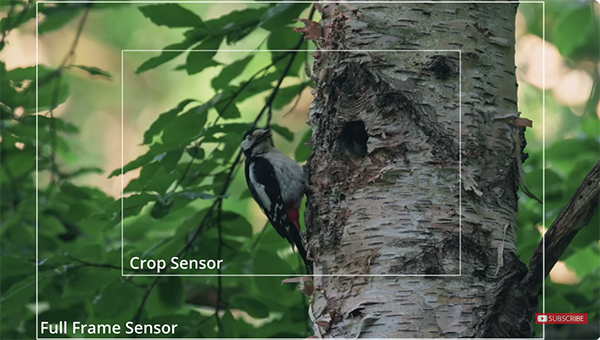Camera Sensor Size: Why Bigger Isn’t Always Better (VIDEO)
Here’s an interesting discussion to help you differentiate between what you want and what you really need when it comes to purchasing a new camera—specifically with regard to camera sensor size. Full-frame models are all the rage, but some photographers regret their decision to “step up” from a full-frame camera.
The decision is not as straightforward as you may think, because a wise purchasing choice greatly depends upon the type of images you shoot most. Landscape photographers prefer optimum resolution, sports shooters are more concerned with processing speed and maximum burst rates, while others pay close attention to density range, low-light capability, and other important variables.
So here’s the conundrum according to instructor Peter Bredahl Dam: “There is a major downside to full-frame cameras, yet many pro photographers choose full-frame over crop.” All you have to do to find out why is watch today’s five-minute video. Then you’ll be better prepared to choose the camera that best suits your needs.

Your budget is also an important consideration because crop-sensor cameras and appropriate lenses are typically less expensive than their full-frame counterparts. In that regard it can make more sense to spend less on a new camera and use the savings to purchases better glass.
Dam prefers shooting with a full-frame camera for his style of photography. He says “I love the handling and how it gives me many more opportunities when shooting at high-ISO values—particularly for wildlife photography.” But he acknowledges that there’s a big compromise to be made as compared to crop-sensor models.
He puts it like this: “The downside of full-frame is when it comes to the reach you get because the larger sensor results in a wider view with any lens you use.” In other words, crop-sensor cameras “help you get closer to the subject” by 1.5 or 1.6X with the same focal length—depending on the camera and it’s crop factor.

The foregoing is just a small taste of what you’ll learn in Dam’s comparison of camera sensor size and the pros and cons of both formats. By the time you’re done watching you’ll have a much better idea of which choice will best meet your needs, and you may even save some cash as a result.
We suggest paying a visit to Dam’s popular YouTube channel, where you’ll find more interesting gear discussions as well as how-to articles that will help elevate your skills.
And on a related note, don’t miss the earlier tutorial we featured with another pro’s take on whether you need a high-end camera with a high-end price.





